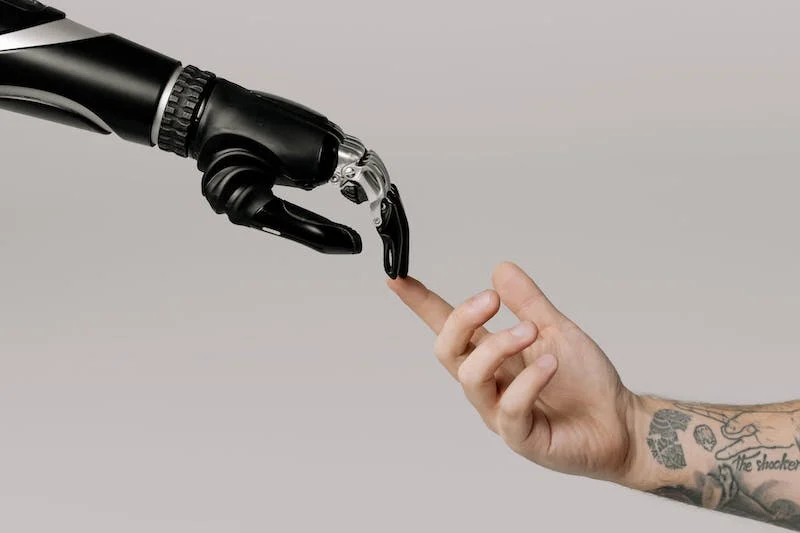Contents
- From Autocomplete to Automation
- Agentic Programming: AI That Codes Itself
- “Vibe Coding” and the New Workflow
- The Shift in Skills: From Typing to Thinking
- Productivity and the Quality Paradox
- The Business Case: Faster Delivery, Lower Costs
- Challenges: Bias, Security, and Ethical Boundaries
- The Cultural Shift: Coding as Collaboration
- Looking Ahead: Toward Autonomous Software
Meta Description:
Developers are embracing AI-assisted and AI-native programming — from code generation to testing and debugging. As AI starts driving workflows, human skills shift toward supervision, design, and validation.
Technology Correspondent
In 2025, the world of software development is in the midst of a revolution — one not defined by a new programming language or a hot framework, but by a new kind of co-pilot: artificial intelligence.
Once dismissed as a novelty, AI tools like GitHub Copilot, Amazon CodeWhisperer, and OpenAI’s GPT-powered coders have now become indispensable in professional workflows. Developers use them to autocomplete functions, detect bugs, refactor legacy code, generate tests, and even explain complex logic.
According to a recent IT Pro report, more than 70% of developers now rely on some form of AI assistance in their day-to-day tasks. What began as convenience has evolved into a paradigm shift — from AI-assisted coding to AI-native development, where algorithms don’t just help humans write code but increasingly drive and automate large portions of the workflow themselves.
Welcome to the age of agentic programming, or what some in Silicon Valley are calling “vibe coding.”
From Autocomplete to Automation
In its earliest forms, AI-assisted development looked like smart autocomplete — helpful, but limited. Today, it’s capable of analyzing entire repositories, reasoning about design choices, and maintaining code consistency across distributed systems.
On platforms like GitHub, developers report productivity gains of 40–50%, especially in repetitive tasks such as unit testing or boilerplate generation. According to LinkedIn’s Emerging Jobs Report, “AI-augmented developer” is now one of the fastest-growing roles globally.
“It’s not about writing every line of code yourself anymore,” says Priya Nandakumar, Senior Software Engineer at a fintech startup in London. “It’s about steering — knowing what you want to build and letting the AI handle the scaffolding.”
This automation isn’t confined to code. AI systems are increasingly involved in testing, CI/CD pipelines, documentation, and even DevOps orchestration. Some tools can autonomously spin up environments, diagnose errors, or propose deployment fixes without human prompts.
In this sense, AI is moving beyond being a pair programmer and toward being a development agent — an autonomous collaborator that can reason about and modify systems dynamically.
Agentic Programming: AI That Codes Itself
Business Insider recently profiled the phenomenon known as agentic programming, where AI doesn’t just assist in writing code but initiates, maintains, and evolves projects on its own.
Coined by former Tesla and OpenAI researcher Andrej Karpathy, the concept envisions AI systems acting as autonomous software entities — capable of setting goals, coding new features, debugging regressions, and self-testing results.
Early prototypes are already in the wild. For example, OpenDevin, an experimental open-source framework, lets AI agents clone repositories, plan feature additions, and execute code autonomously in sandboxes. Similarly, startups like Cognition Labs and SWE-Agent are developing “AI developers” that can manage tickets, commit code to version control, and interact with CI pipelines.
“We’re witnessing the birth of a new development paradigm,” Karpathy explained at a 2025 developer conference. “Agentic AI doesn’t just help you code — it understands your project’s intent and executes toward it.”
This model goes beyond task automation. It implies a future where software is self-maintaining, constantly adapting to business needs and infrastructure changes with minimal human intervention.
“Vibe Coding” and the New Workflow
“Vibe coding” — a term gaining traction among developers on LinkedIn and Reddit — captures this shift in tone and culture. It refers to a workflow where developers describe what they want, often in natural language or through examples, and the AI figures out how to make it happen.
Think less syntax and more semantics.
Instead of meticulously crafting functions, a developer might say:
“Build an API that syncs invoices between Stripe and our CRM, and schedule daily updates.”
The AI, integrated into the IDE, generates the code, tests it, and suggests deployment scripts.
“You’re no longer the mechanic,” says Nandakumar. “You’re the architect, the designer, the conductor. The AI plays the instruments.”
These tools are evolving to understand context, not just commands. By analyzing entire repositories, documentation, and prior commits, they learn project conventions and produce code consistent with established patterns.
In short: the IDE is turning into a collaborative environment where developers express intent, and AI executes with precision.
The Shift in Skills: From Typing to Thinking
As AI systems take over low-level tasks, the role of the human developer is changing. The new core skills aren’t just syntax mastery — they’re prompt engineering, validation, and ethical oversight.
According to IT Pro’s survey, developers list their most valuable emerging skills as:
- Designing clear problem statements for AI systems.
- Evaluating AI-generated code for security and reliability.
- Understanding AI model limitations and preventing bias or hallucination.
- Integrating AI-driven workflows with existing DevOps tools.
“It’s similar to how calculators changed math,” says Michael Tsai, CTO at an AI tooling startup. “We stopped memorizing formulas and started focusing on problem-solving. AI is doing the same for programming.”
Universities are catching on. Leading computer science programs at MIT, Stanford, and Imperial College now offer courses in AI-integrated software engineering — teaching students how to collaborate effectively with generative tools, rather than compete against them.
In industry, “AI literacy” is becoming a hiring differentiator. A LinkedIn Learning report shows that postings requiring experience with AI tools have increased by 110% since early 2024.
Productivity and the Quality Paradox
AI-assisted coding has supercharged productivity — but not without caveats. While development speed has surged, many engineers report spending more time reviewing and debugging AI-generated output.
A 2025 IT Pro survey found that nearly half of developers don’t fully trust the accuracy of AI-suggested code, and about one in three said they often waste time correcting logic errors introduced by AI.
“AI helps you go fast, but you still need to know where you’re going,” says Tsai. “Blind trust leads to brittle software.”
As a result, a new role has emerged in many tech companies: the AI Code Reviewer — an engineer tasked with validating AI output, ensuring compliance, and maintaining quality standards.
In parallel, AI observability tools have emerged — systems that monitor how AI code generators perform over time, flagging potential vulnerabilities or code drift.
Despite these growing pains, most developers agree the benefits outweigh the risks. With proper validation frameworks, AI can reduce human fatigue, improve test coverage, and standardize coding style across teams.
The Business Case: Faster Delivery, Lower Costs
The adoption curve for AI in development is steep — and so are the returns.
Enterprises that integrated AI-based development workflows report up to 50% reductions in development cycle times, according to LinkedIn’s Future of Programming Report. For startups, that means faster prototyping and iteration; for enterprises, it means streamlined maintenance and modernization.
“AI lets us do in days what used to take weeks,” says Fatima Ruiz, Head of Engineering at a logistics SaaS provider. “We use AI to generate test suites, summarize pull requests, and even write changelogs automatically.”
Major cloud providers are embedding AI deeply into their platforms. AWS, Microsoft Azure, and Google Cloud now offer AI-assisted SDKs, infrastructure templates, and cost optimization bots — effectively turning the cloud into a self-managing environment.
The economics are compelling. As AI agents take over repetitive tasks, teams can focus on innovation rather than upkeep.
Challenges: Bias, Security, and Ethical Boundaries
As with any powerful technology, AI-native development raises significant ethical and legal questions.
Bias and intellectual property remain pressing issues. Many AI models are trained on publicly available code, which may include copyrighted material. If an AI reproduces licensed code snippets, who is liable — the user or the model provider?
Additionally, security is a growing concern. AI systems may inadvertently generate vulnerable or malicious code, especially when trained on noisy data. A 2024 study from Stanford University found that AI-generated code was 40% more likely to contain exploitable vulnerabilities than human-written equivalents.
Regulators are taking note. The EU’s AI Act and emerging U.S. frameworks emphasize transparency in AI-assisted development, requiring documentation of model usage and provenance for enterprise systems.
Ethical considerations also extend to labor. As automation increases, questions arise about the future of human developers — especially in entry-level roles where AI can outperform novices.
“We need to design systems where humans remain in the loop,” argues Karpathy. “The goal isn’t to replace developers — it’s to elevate them.”
The Cultural Shift: Coding as Collaboration
The rise of AI-native development is not just technical — it’s cultural.
Teams are learning to treat AI as a collaborator, not a tool. Daily stand-ups now include “AI tasks.” Engineers pair-program not just with colleagues but with machine agents. Documentation is generated in real time by AI observers monitoring the dev pipeline.
This is changing how developers think about creativity itself. Instead of crafting every loop or class, they’re curating ideas, testing prototypes, and shaping outputs through feedback cycles.
“It’s less about craftsmanship and more about creativity,” says Ruiz. “We’re composing with code instead of carving it.”
Communities on GitHub and LinkedIn are forming around this new ethos. Developers share prompt templates, discuss “best practices for vibe coding,” and compare AI personas for specific languages. The culture feels part engineering, part artistry — and deeply collaborative.
Looking Ahead: Toward Autonomous Software
If 2024 was the year AI joined the dev team, 2025 may be the year it starts running projects.
The near future points toward autonomous software ecosystems, where AI continuously monitors, maintains, and optimizes codebases — identifying inefficiencies, updating dependencies, and patching vulnerabilities automatically.
Industry watchers predict that within five years, AI-native systems will handle most of the low-level work in enterprise software, freeing human engineers to focus on architecture, ethics, and creativity.
“Software will no longer be static,” says Karpathy. “It will be living, learning, and self-evolving.”
That vision raises deep philosophical questions about authorship and accountability. But for now, one thing is clear: AI is no longer a sidekick in software development. It’s becoming a partner — and, in some cases, the driver.
🔗 Sources & Further Reading
See related coverage: Beyond Play: How the Metaverse and Persistent Worlds Are Turning Games into Social Universes



